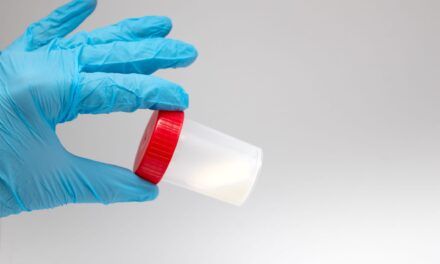At ADLM 2025, researchers spotlight diagnostic innovations that aim to improve gynecologic cancer detection through greater access and less invasive methods.
At ADLM 2025, new research spotlights two tests that could make testing for gynecological cancers more equitable and accurate.
One study showed that a self-collection test for human papillomavirus (HPV), the virus that causes cervical cancer, could help many more women in underserved communities get screened. A second study describes a test that would minimize the number of invasive procedures women must endure when being evaluated for endometrial cancer.
Equitable Access to Cervical Cancer Screening
Typically, clinicians conduct HPV testing—which is recommended for most adult women every five years—in a doctor’s office using the same cells they collect during a Pap smear. But some patient populations, including immigrants, migrant workers, and underserved communities, are more likely to be under-screened due to limited access and are thus disproportionately affected by cervical cancer.
A self-collection HPV test approved by the Food and Drug Administration in May 2024 could change that. While the new test must still occur in a healthcare setting, it can be done at local clinics and community-wide events, potentially widening access. “HPV self-collection is a game-changing approach for cervical cancer screening—especially for underserved Asian American communities,” says Zhengchun Lu, MD, MSc, PhD, who is part of a clinical research team from Oregon Health & Science University, in a release.
Lu’s team found self-collection to be a useful tool. “Our study is among the first to show that, when screening is offered in a culturally sensitive, community-based setting with bilingual support, it enhances both education and screening rates in this population,” she says in a release.
The study followed 28 Asian women aged 28-62 who self-collected HPV samples under the guidance of pathologists at a community clinic. All the samples were found to be valid, with 26 testing negative for HPV. More than 94% of the women tested said they were likely or very likely to choose self-collection again, citing ease, comfort, and clear instructions. Moreover, 71% said they wouldn’t have had access to HPV testing otherwise.
“By lowering logistical, language, and cultural barriers, HPV self-collection brings preventive care directly to the communities that need it most,” Lu says in a release. “This model helps shift cervical cancer prevention from a clinic-centric to a patient-centered, outreach-based strategy—ultimately saving lives through earlier detection and greater equity in care.”
A Minimally Invasive Test for Endometrial Cancer
Endometrial cancer is the sixth most common cancer in women worldwide and the most common gynecologic cancer in high-income countries like the US. Doctors typically initiate testing in post-menopausal women with abnormal uterine bleeding, a common symptom. But the biopsy method used for diagnosis can be inconclusive up to 30% of the time, warranting further examinations that can be painful and invasive, such as hysteroscopy or dilation and curettage.
With standard endometrial biopsies, pathologists look for cancerous or precancerous cells, which are often not concentrated enough in samples to provide definitive results. By instead targeting proteins in the fluid fraction of the same sample, a new test could enhance diagnostic accuracy.
At ADLM 2025, researchers from Spain described this minimally invasive alternative, which would reduce the number of intrusive follow-up procedures needed. The test, called WomEC, “simplifies care, reduces costs, and reduces anxiety and pain for women entering the diagnostic pathway,” says Dr Antonio Gil, founder of MiMARK Diagnostics, who led the study, in a release.
The researchers used mass spectrometry to assess more than 100 proteins in uterine fluid samples from 358 patients, 217 of whom were known to have endometrial cancer and 141 who didn’t have it. They used that information to find three proteins that could correctly identify 99% of women with endometrial cancer, while ruling it out in 97% of those who do not require further testing.
MiMARK is developing an in vitro diagnostic test (immunoassay) based on this approach that could be implemented in clinical laboratories within a few years, according to Gil. “We now have strong diagnostic performance data in retrospective studies, but we need to take additional steps before the test becomes commercially available,” he says in a release.
ID 151017312 © Transurfer343 | Dreamstime.com





